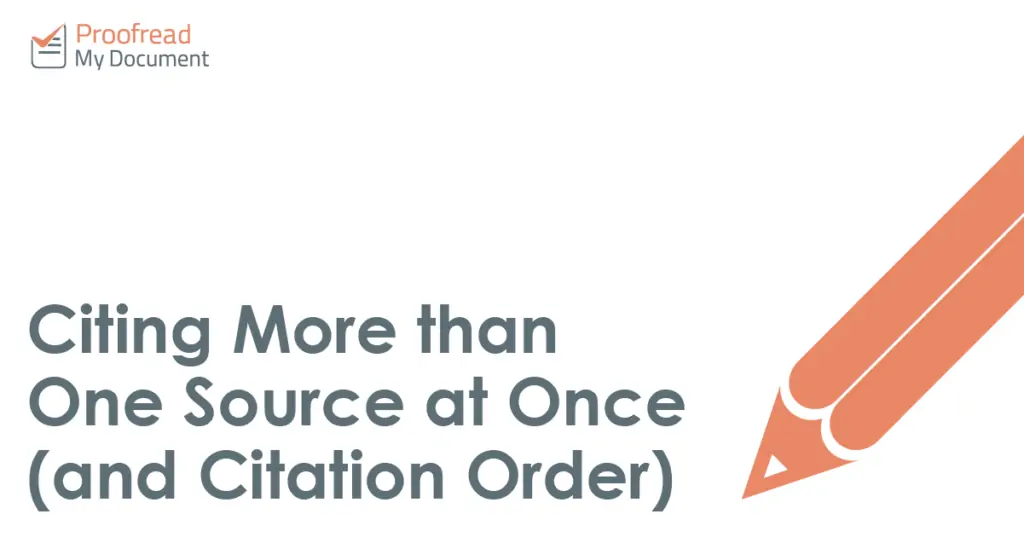To support your arguments in an essay, you need to cite your sources. And if you really want to support a particular point, you can even cite more than one source in the same place.
But how do you do cite multiple sources at the same time? And what order should you cite them in? This depends partly on the system you’re using, but we can offer some general advice.
Author–Date Citations
With author–date (or parenthetical) citations, as well as knowing the referencing system you are using, you need to consider who you are citing.
More than One Source by the Same Author
When citing multiple sources by one author, give the year of each source after the author’s surname. For instance, an APA citation would look like this:
This has been proven on several occasions (Jones, 1999, 2002, 2011).
Here, we have three sources by Jones cited together. As above, the sources should be listed in order of publication. This applies to the vast majority of author–date systems, including APA, Chicago, and most versions of Harvard referencing. If citing more than one source by the same author from the same year, however, you need to add a letter after the date:
Recent studies have supported this theory (Smith, 2014a, 2014b).
Finally, a quick note on MLA referencing: this system does not include a year in citations, so you need to use a shortened source title instead when citing multiple sources by one author.
More than One Source by Different Authors
To cite more than one source by more than one author, you need the semicolon. This handy punctuation mark sits between each source within a citation, like this:
Some have disputed this conclusion (Appleby, 2008; Johnson, 1991; Smith, 2015).
This punctuation is used in most author–date systems. However, there is less agreement on citation order. The example above uses the author’s surnames (i.e. the order that the sources would appear in the reference list), which is standard in APA, MLA, and Chicago referencing.
But in some cases, particularly with Harvard referencing, you may have to order sources by year:
Some have disputed this conclusion (Johnson, 1991; Appleby, 2008; Smith, 2015).
Find this useful?
Subscribe to our newsletter and get writing tips from our editors straight to your inbox.
This makes it important to check your style guide for advice on citation order.
Footnote Citations
With footnote referencing, most systems suggest including multiple sources in a single footnote. Our friend the semicolon reappears here, helping us to keep sources separate. For example:
1. Michael Appleby, Referencing Made Simple (Sydney: PI Press, 2008), 111-112; Tom Jones, Order and Chaos: The Science of Citation (London: PME Publications, 1999), 24.
Here, we have two sources by different authors in a single footnote. The same approach applies when citing more than one source by a single author.
Citation order is not usually a major issue in footnote citations (e.g. Chicago suggests listing sources either in order of importance or alphabetically by surname, but neither is compulsory). However, it is still worth checking your style guide for advice on this point.
In addition, citations should only be written like this when all sources support the same argument. If you are using different sources to support distinct points, use separate footnotes.
Endnote Systems
Most endnote systems (e.g. IEEE) use a different number for each source. As such, citing more than one source (whether by one author or different authors) requires giving all source numbers:
We have seen this phenomenon in several cases [1], [3], [5]-[7].
Here, the sources cited are the first, third, fifth and seventh in the reference list. This same approach applies regardless of whether you’re using square brackets, round brackets or superscript numbers in the main text. The important thing is that sources are listed with the same numbers and in the same order they appear in the reference list.
Expert Academic Proofreading
To make sure your references are always clear and correct, submit your work to our expert academic proofreaders. Get your first 500 words checked for free today.



